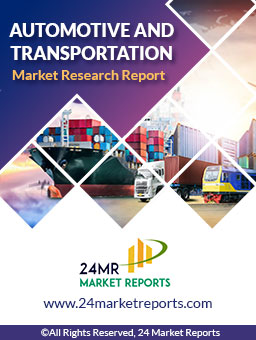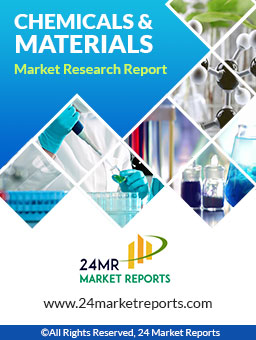
COMPANIES COVERED
BasfDownload FREE Report Sample
Download Free sampleEmission Control Catalysts (ECCs) are specialized materials—typically precious‑metal or base‑metal formulations supported on ceramic or metallic substrates—designed to accelerate redox reactions that convert harmful engine and industrial exhaust constituents (e.g., CO, Unburned Hydrocarbons, NOx, and Particulate Matter) into benign gases such as CO₂, H₂O, and N₂ before they enter the atmosphere. Common architectures include three‑way catalytic converters (TWCs) for stoichiometric spark‑ignition engines; diesel oxidation catalysts (DOCs); selective catalytic reduction (SCR) bricks coated with vanadia–tungsta or Cu‑/Fe‑zeolites; and oxidation/SCR combo units for gas‑turbine and industrial boiler stacks.
Catalyst layers are impregnated with Platinum (Pt), Palladium (Pd), and Rhodium (Rh)—sometimes rare‑earth promoters (Ce, La) or base metals (Mn, Cu, Fe)—whose surface atoms provide active adsorption sites for reactant molecules, lowering activation energy and enabling near‑instant conversion across a broad temperature window. Beyond mobile transport, stationary ECC deployments target petrochemical cracker furnaces, cement kilns, power‑plant NOx abatement, and marine‑emission control as IMO Tier III sulfur restrictions tighten.
Market Size
Global Emission Control Catalysts (ECCs) market generated USD 11.08 billion in 2024 and is forecast to reach USD 17.34 billion by 2032, posting a 5.10 % CAGR.
North America contributed USD 3.145 billion in 2024, with a projected 4.37 % CAGR as EPA Tier 4 and Californian SULEV30 standards phase‑in across light‑duty and heavy‑duty fleets.
Historic Trajectory (2018‑2024)
To know more about market statistics, Download a FREE Sample copy
Euro 6/VI and China VI Roll‑Outs: Stricter tailpipe thresholds spurred double‑digit growth in Pd‑dominant TWC coatings, offsetting pandemic‑era vehicle downturns.
Platinum Group Metals (PGM) Price Volatility: Palladium price spikes above USD 2 500 / oz in 2022 prompted partial material substitution with Pt‑rich blends, shifting OEM formulations.
Industrial Retrofit Boom: U.S. shale‑gas peaker plants and EU waste‑to‑energy incinerators adopted SCR + ammonia‑slip catalysts, adding nearly USD 630 million in stationary revenue.
Forward Growth Catalysts (2025‑2032)
Hybrid & Flex‑Fuel Vehicles: While BEVs rise, hybrid ICEs remain; their at‑cold‑start emission bursts demand advanced low‑temp light‑off catalysts.
Maritime IMO 2028 NOx Cap: Global SCR sales to LNG carriers and retrofits to container fleets expected to top USD 1 billion cumulative by 2030.
Emerging‑Market Legislation: India Bharat Stage VII and Brazil PROCONVE L‑8 to add 2.2 million catalyst‑equipped trucks annually by 2029.
Hydrogen ICE & E‑Fuel Engines: Lean‑burn hydrogen engines require high‑temperature ammonia‑oxidation (AMOX) catalysts—a nascent but high‑margin niche.
By 2032, on‑road applications will still command ~58 % share, but stationary and marine segments together will grow to 30 %, driven by decarbonisation retrofits and blue‑ammonia co‑firing.
Market Dynamics (Drivers, Restraints, Opportunities, and Challenges)
Drivers
Regulatory Stringency: The EU’s proposed Euro 7 limits slash NOx to 35 mg/km for LDVs—necessitating high‑density Pd/TWC washcoats.
Air‑Quality Concerns: Rising urban smog episodes push municipal low‑emission zones, accelerating fleet turnover to catalyst‑equipped vehicles.
Corporate ESG & Carbon Markets: Industrial emitters integrate SCR/oxidation catalysts to qualify for voluntary carbon credits and ESG reporting frameworks.
Restraints
PGM Cost Fluctuations: Supply instability from Russia and South African mines can inflate catalyst cost up to 15 %, squeezing converter margins.
Electrification Headwinds: BEV market share erodes long‑term LDV catalyst volumes, especially in developed economies.
Ammonia Infrastructure: SCR effectiveness hinges on urea‑delivery networks; shortages impair rural adoption.
Opportunities
Recycling & Circular PGMs: Spent catalyst recovery (autocatalyst scrap) offers margin opportunities and supply security.
Digital Catalyst Management: IoT sensors enabling predictive catalyst‑bed replacement schedule; service vendors upsell O&M contracts.
Advanced Substrate Innovation: 3D‑printed metal foams and high‑cell‐density cordierite promise 25 % lower back‑pressure—key for turbo‑down‑sized engines.
Challenges
Thermal Durability vs. Low‑Temp Light‑Off Trade‑Off: Achieving sub‑180 °C activation while resisting 1 000 °C regeneration cycles.
NH₃ Slip & N₂O By‑Products: Tightening greenhouse‑gas metrics require sophisticated multi‑layer catalysts (SCR + AMOX + TWC) to balance conversions.
Regulatory Uncertainty: Potential Euro 7 delays or rollbacks amid cost‑of‑living debates create capex pause for OEMs.
Competitor Analysis (in brief)
Top five suppliers—Johnson Matthey, BASF, Umicore, Cataler, and Clariant—control ~70 % of global autocatalyst volume.
Johnson Matthey leads in high‑porosity TWC and heavy‑duty SCR bricks; invests in PGM recycling.
BASF pushes Cu‑CHA zeolite SCR technology for diesel pickup markets; pilots 3D‑printed metallic substrates.
Umicore capitalises on African PGM mine integration, hedging metal price risk.
Cataler (Toyota group) pioneers low‑Pd, high‑Pt mixes to offset palladium scarcity.
Clariant significant in stationary VOC oxidation catalysts for petrochemical plants.
New entrants—Heraeus Precious Metals (digital twin wash‑coat design) and Haldor Topsoe (blue ammonia SCR units)—compete on innovation rather than scale.
Global Emission Control Catalysts (ECCs): Market Segmentation Analysis
Emission Control Catalysts Market provides a deep insight into the global Emission Control Catalysts (ECCs), covering all its essential aspects. This ranges from a macro overview of the market to micro details of the market size, competitive landscape, development trend, niche market, key market drivers and challenges, SWOT analysis, value chain analysis, etc.
The analysis helps the reader to shape the competition within the industries and strategies for the competitive environment to enhance the potential profit. Furthermore, it provides a simple framework for evaluating and assessing the position of the business organization. The report structure also focuses on the competitive landscape of the Global Emission Control Catalysts (ECCs). Emission Control Catalysts Market introduces in detail the market share, market performance, product situation, operation situation, etc., of the main players, which helps the readers in the industry to identify the main competitors and deeply understand the competition pattern of the market.
In a word, Emission Control Catalysts Market is a must-read for industry players, investors, researchers, consultants, business strategists, and all those who have any kind of stake or are planning to foray into the Emission Control Catalysts (ECCs) in any manner.
Market Segmentation (by Application)
Mobile Emission Control Application
Stationary Emission Control Application
Market Segmentation (by Type)
Palladium Catalyst
Platinum Catalyst
Rhodium Catalyst
Key Company
Basf
Cataler
Clariant
Johnson Matthey
Umicore
Geographic Segmentation
North America: USA, Canada, Mexico
Europe: Germany, UK, France, Russia, Italy, Rest of Europe
Asia‑Pacific: China, Japan, South Korea, India, Southeast Asia, Rest of Asia‑Pacific
South America: Brazil, Argentina, Columbia, Rest of South America
Middle East and Africa: Saudi Arabia, UAE, Egypt, Nigeria, South Africa, Rest of MEA
FAQ Section
What is the current market size of the Emission Control Catalysts (ECCs) Market?
Which are the key companies operating in the Emission Control Catalysts (ECCs) Market?
What are the key growth drivers in the Emission Control Catalysts (ECCs) Market?
Which regions dominate the Emission Control Catalysts (ECCs) Market?
What are the emerging trends in the Emission Control Catalysts (ECCs) Market?
Key Benefits of This Market Research:
Industry drivers, restraints, and opportunities covered in the study
Neutral perspective on the market performance
Recent industry trends and developments
Competitive landscape & strategies of key players
Potential & niche segments and regions exhibiting promising growth covered
Historical, current, and projected market size, in terms of value
In-depth analysis of the Emission Control Catalysts (ECCs) Market
Overview of the regional outlook of the Emission Control Catalysts (ECCs) Market:
Key Reasons to Buy this Report:
Access to date statistics compiled by our researchers. These provide you with historical and forecast data, which is analyzed to tell you why your market is set to change
This enables you to anticipate market changes to remain ahead of your competitors
You will be able to copy data from the Excel spreadsheet straight into your marketing plans, business presentations, or other strategic documents
The concise analysis, clear graph, and table format will enable you to pinpoint the information you require quickly
Provision of market value data for each segment and sub-segment
Indicates the region and segment that is expected to witness the fastest growth as well as to dominate the market
Analysis by geography highlighting the consumption of the product/service in the region as well as indicating the factors that are affecting the market within each region
Competitive landscape which incorporates the market ranking of the major players, along with new service/product launches, partnerships, business expansions, and acquisitions in the past five years of companies profiled
Extensive company profiles comprising of company overview, company insights, product benchmarking, and SWOT analysis for the major market players
The current as well as the future market outlook of the industry concerning recent developments which involve growth opportunities and drivers as well as challenges and restraints of both emerging as well as developed regions
Includes in-depth analysis of the market from various perspectives through Porters five forces analysis
Provides insight into the market through Value Chain
Market dynamics scenario, along with growth opportunities of the market in the years to come
6-month post-sales analyst support
Customization of the Report
In case of any queries or customization requirements, please connect with our sales team, who will ensure that your requirements are met.
Chapter Outline
Chapter 1 mainly introduces the statistical scope of the report, market division standards, and market research methods.
Chapter 2 is an executive summary of different market segments (by region, product type, application, etc), including the market size of each market segment, future development potential, and so on. It offers a high-level view of the current state of the Emission Control Catalysts (ECCs) Market and its likely evolution in the short to mid-term, and long term.
Chapter 3 makes a detailed analysis of the market's competitive landscape of the market and provides the market share, capacity, output, price, latest development plan, merger, and acquisition information of the main manufacturers in the market.
Chapter 4 is the analysis of the whole market industrial chain, including the upstream and downstream of the industry, as well as Porter's five forces analysis.
Chapter 5 introduces the latest developments of the market, the driving factors and restrictive factors of the market, the challenges and risks faced by manufacturers in the industry, and the analysis of relevant policies in the industry.
Chapter 6 provides the analysis of various market segments according to product types, covering the market size and development potential of each market segment, to help readers find the blue ocean market in different market segments.
Chapter 7 provides the analysis of various market segments according to application, covering the market size and development potential of each market segment, to help readers find the blue ocean market in different downstream markets.
Chapter 8 provides a quantitative analysis of the market size and development potential of each region from the consumer side and its main countries and introduces the market development, future development prospects, market space, and capacity of each country in the world.
Chapter 9 shares the main producing countries of Emission Control Catalysts (ECCs), their output value, profit level, regional supply, production capacity layout, etc. from the supply side.
Chapter 10 introduces the basic situation of the main companies in the market in detail, including product sales revenue, sales volume, price, gross profit margin, market share, product introduction, recent development, etc.
Chapter 11 provides a quantitative analysis of the market size and development potential of each region during the forecast period.
Chapter 12 provides a quantitative analysis of the market size and development potential of each market segment during the forecast period.
Chapter 13 is the main points and conclusions of the report.

Speak to our Custom Research Team and get the Custom Research in a budget
Custom ResearchFrequently Asked Questions ?
A license granted to one user. Rules or conditions might be applied for e.g. the use of electric files (PDFs) or printings, depending on product.
A license granted to multiple users.
A license granted to a single business site/establishment.
A license granted to all employees within organisation access to the product.
Upto Working 24 to 48 hrs
Upto 72 hrs max - Weekends and Public Holidays
Online Payments with PayPal and CCavenue
Wire Transfer/Bank Transfer
Hard Copy




 Industry Market Size
Industry Market Size SWOT Analysis
SWOT Analysis Industry Major Players
Industry Major Players Revenue Forecasts
Revenue Forecasts Historical and Forecast Growth
Historical and Forecast Growth Profitability Analysis
Profitability Analysis
























